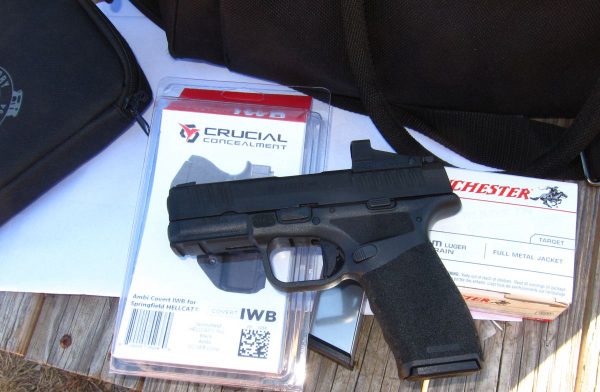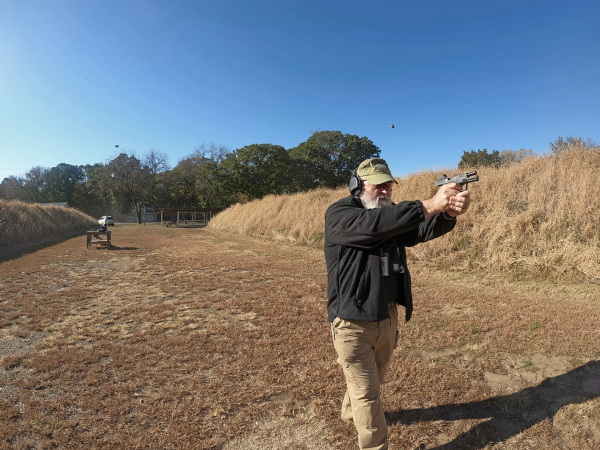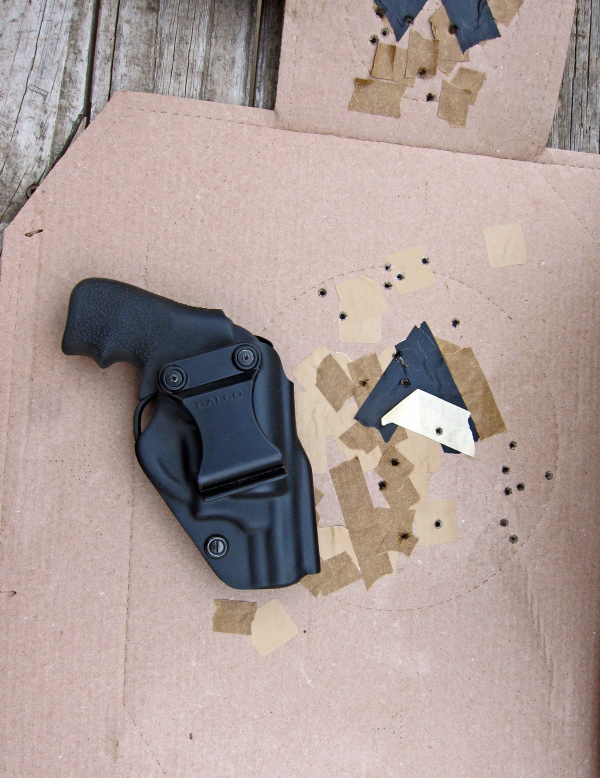I recently received a “new to me” optic to try on a subcompact 9mm pistol. This is the Shield SMSc. A “Shield Mini Sight Compact” (hence the initials for a name) is a version of the previous RMSc (Reflex Mini Sight Compact) with an emphasis on light weight. Available from the Springfield Armory Store, the SMSc features a 4 MOA red dot reticle. The body of the optic is polymer – as is the lens, which has a quartz coating. It’s powered by a single CR2032 battery and is supplied with the battery, mounting screws, hex wrench tools (don’t forget these when going to the range!), a sight adjustment “minidial” and a 1° shim plate.

Currently the Shield SMSc is available on the Springfield Armory Hellcat Pro from the factory.
I’d been interested in working with one of Shield’s tiny sights for some time. This was my first opportunity. Installation on the Hellcat Pro was a snap. Getting it zeroed was another matter. Not that it’s difficult, you just have to follow instructions far enough to have the right tools, specifically a 1.5mm Hex wrench.
Interestingly, the fitted optic fits so low to the bore axis, you can co-witness the excellent factory sights on the Hellcat Pro. There’s not a large optic frame, buttons, switches or knobs to get in the way of your vision. Look at the target through the optic.
Being so low to the slide, the SMSc facilitates moving the non-optics pistol shooter into the modern world as you can present it just like a non-optics pistol “for a seamless transition,” as the Shield website explains.
After installation – and bringing the appropriate wrench to the range, I got the hits on paper then moved back to fifty yards. This wasn’t to reproduce what has been called the “Mall Qual,” but just to see what would happen. I was tending left, below a B-8 repair center stapled over an FBI-Q target. After some adjustment, I tried the ‘head’ portion of the “Q” from 25 yards. Likewise, I printed low and left.
Classic pre-ignition push? I thought to try another adjustment and moved to fifteen yards. All the hits were in the black, though a little high. At 7 yards, I went for high-percentage hits as soon as I saw the gun level out from ready. They were all good. Back at fifty yards, I went back to the bullseye repair center. I had two hits in the seven ring and a hit high in the 10 ring.
This little gun can shoot better than I can hold.
The optic? All it’s got to do is confirm the point of impact of the outgoing rounds and it does that quite well.

On a later range trip, I used the gun with an IWB holster from Crucial Concealment. I shot from 25 yards, singles from the holster in around three seconds per round. From there, I moved to fifteen yards and shot a pair from the holster in less than four seconds, followed by singles from ready in around .85 second. I was down two points on this stage.
Moving up to five yards, I shot the “school drill” hit to the high percentage area of the target and a failure drill. At seven yards, a reload stage was “fumble city.” Those magazines are comparatively small and slippery. After a ten-yard pair in time and a “shoot on the move” NSR stage, I went back to seven yards and worked the reload exclusively. I didn’t reliably get to sub-4 second reloads but I hit the mark a few times.
More work to be done.

My critical takeaway? That the optic mounts lower on the slide with no adapters or mounting plates so it co-witnesses with this pistol's sights. I’m a fan of that concept. And you’ll notice I didn’t mention much about the optic; it worked. The battery life is modern-standard, around 2-3 years in average use and around four years in dark storage. Weighing in at just over half an ounce – with battery – it won’t slow you down.
I had no sighting issues and “found the dot,” but I’ve been working on that.
The Shield SMSc fits low enough to the gun that the presentation is the same as with irons. That’s a big help.
I’d prepared for using optics by using the Ruger LCR in 22 caliber fitted with user-installed Ember Sights (from XS Sights). I did some “target focused” shooting from seven yards. I know people consider it “use the Force, Luke” stuff, but it’s not. It was Walt Rauch who told me that “all aimed fire is point shooting and all point shooting is aimed fire.”
It’s knowing what you need to see to make the hit – and seeing it.
Watching the target and letting the gun come into the eyeline, you see the bright yellow ball intruding into your view of the target. Using the instant feedback of seeing the hits allows the adjustments to grip for each string. Getting that information helps you learn the proper placement of the gun along with the visual component. I practiced on an IDPA target with Federal Auto Match ammo.
I began with singles and with a trigger control exercise on the high-percentage component of the target. Aimed in, finger on the trigger, I shot as the timer sounded. My times ranged from .26 to .20 of a second. I went to singles, target-focused on the larger scoring ring. I used the timer, but took no note of the elapsed times for the most part. My concern was more getting used to focusing on the target in preparation for shooting guns with pistol-mounted optics.
After a cylinder load, I went to the “Claude Werner” Ball & Dummy exercise. After the first shot was fired, I’d pause to open the cylinder and spin it before closing the gun onto the cylinder. After a few rounds, there was a “click” instead of a “bang.” That helped me see whether I was moving the gun when I manipulated the trigger. While I allowed one round to leave that 8-inch ring, it were close.
I’m fond of the small guns – including both of these.
-- Rich Grassi